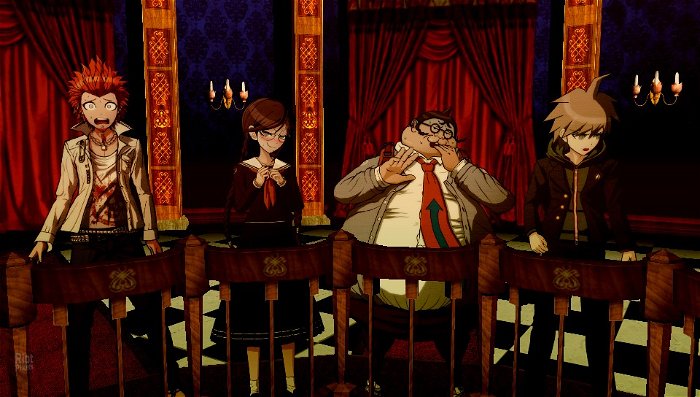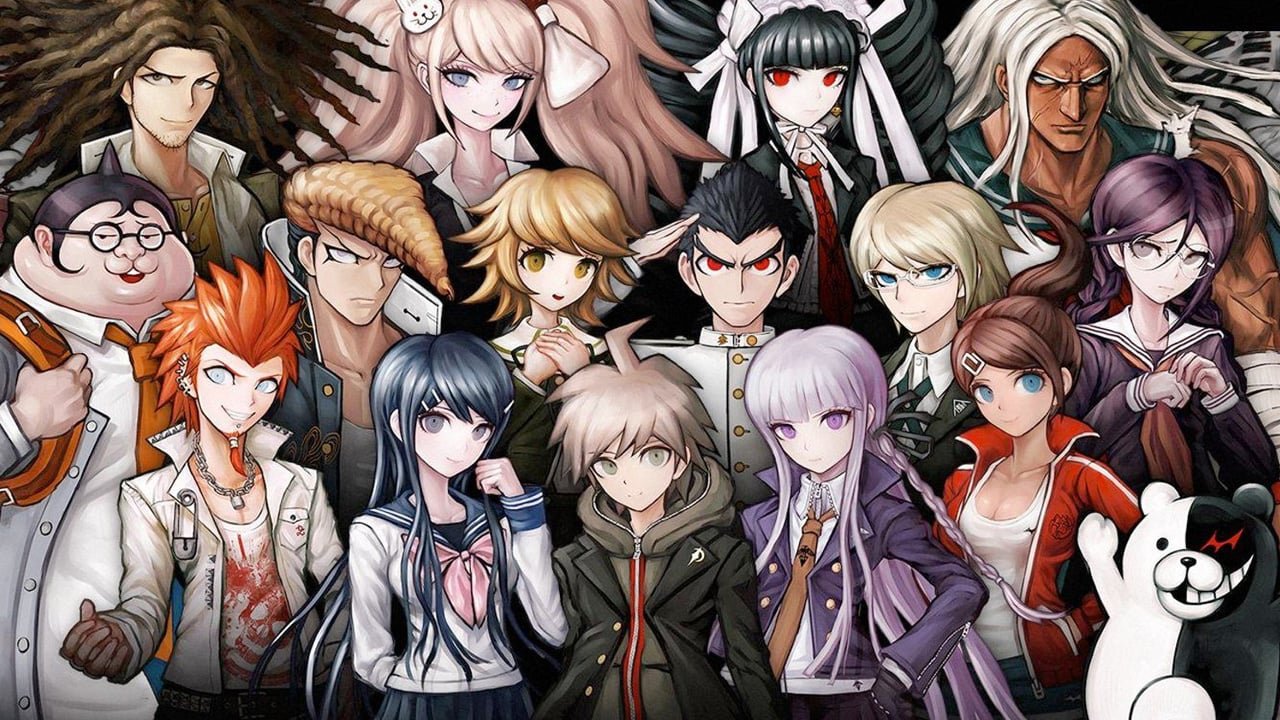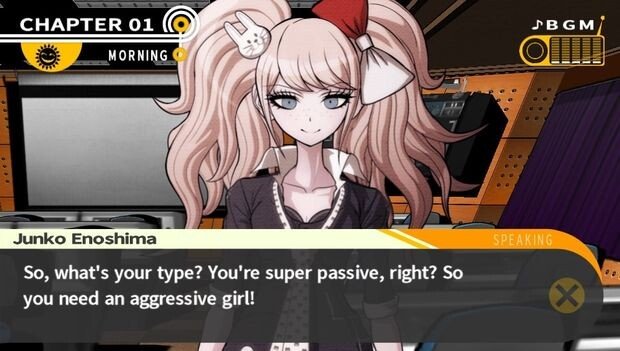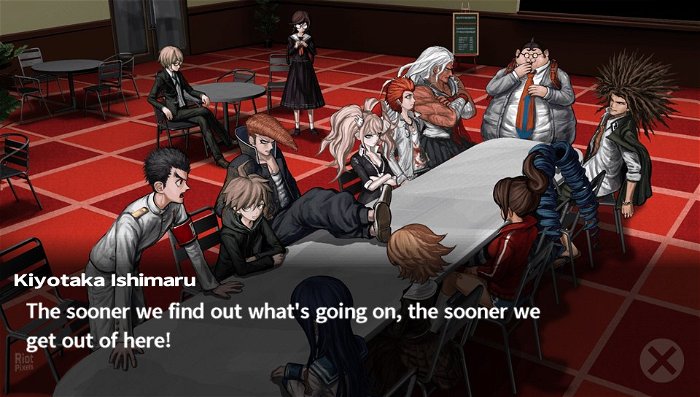This article discusses plot details from Danganronpa: Trigger Happy Havoc.
Danganronpa: Trigger Happy Havoc wants its story to be taken seriously. That’s not to say that Spike Chunsoft’s visual novel doesn’t know how to have fun with its goofy murder mystery plot—only that its developer makes a clear attempt at providing players with a story about much more than a cast of off-beat cartoon detectives. The plot centres on a group of students who, after being invited to attend a prestigious private school, find the building turned into a kind of prison where they’re constantly monitored by a talking, homicidal robot bear. The students are told that they have two choices: either live out the rest of their lives inside the locked school, or attempt to murder one another. Anyone who can kill a classmate and make it through a trial without being identified gets to go free.

Though Danganronpa’s set-up is a grim one, fixated as it is on violent betrayal, it attempts to lighten the mood in a number of ways. First; its visuals are hyper-colourful and its cast of students are rendered in an exaggerated anime style. Second; the inherent weirdness of the game’s premise is constantly recognized and used as a springboard for comedy. Together, these two elements lead to plenty of situations where a character who is taken aback by an unexpected plot twist might, say, howl in surprise, their expression changing so their eyes glow red, their arms shooting up in comic disbelief and glowing lightning bolts shooting out from their sides.
Spike Chunsoft likely chose to portray the students with super colourful character designs and massively exaggerated reactions as a way of injecting humour and lightness into a story that is ultimately about a group of kids killing one another off. This is a good idea—spending 20 hours with a game focused so heavily on death would be draining. But the actual execution of this concept misses the mark to the point that it’s hard to take any of Danganronpa’s attempts at nihilistic moralizing seriously.
At times (and especially toward its conclusion), Danganronpa tries to delve into the darkness of human nature—to portray a post-apocalypse where a fresh start at remaking the world comes dangerously close to complete failure. The experiment that takes place between the students—the “class trials” that involve solving murders motivated by greed, shameful secrets, and personal ambitions—are meant to reflect our species’ worst tendencies. The fact that the group is cloistered together, left to either work together to find a way to escape their prison or try to get away with murder to achieve individual freedom, is meant to work as social commentary. For every successfully written plot point, though, Danganronpa undermines its drama with tone-deaf “comedic” moments.
During the game’s climatic final class trial the true nature of the school and the murderous student experiment is finally revealed. The player learns that the outside world has likely been destroyed, that their memories have been wiped, and that one of their friends is the architect of the brutal killings. The plot begins to come together with its darker themes in proper thriller genre fashion. But then, the character with a split personality speaks up and the screen is filled with alternating portraits of a withdrawn young girl or a drooling psychopath, two foot long tongue whipping around her head. The “catch phrase” voice acting that plays whenever a character speaks (spouting canned lines like “You’ve gotta be kidding me!”) continues, layered atop shots of the cast debating how to react to finally confronting a criminal mastermind by twisting their faces into ridiculous, inhuman expressions.

The disconnect between these cartoonish character designs and the game’s attempts at serious drama makes it difficult to take even Danganronpa’s best-written scenes seriously. I wish this wasn’t the case. When Spike Chunsoft manages to strike the proper tonal balance—a murder mystery that acknowledges the absurdity of its plot with light comedy—it’s a strong entry point to the visual novel genre (which I’ve always found interesting, but impenetrable). Unfortunately, Danganronpa ends up feeling more like its visuals and sense of humour have been grafted onto a story that demands an entirely different sensibility. It only goes to show just how important it is to think about a videogame’s creation as a holistic experience and to fully consider how each piece of design works to further the experience as a whole.






